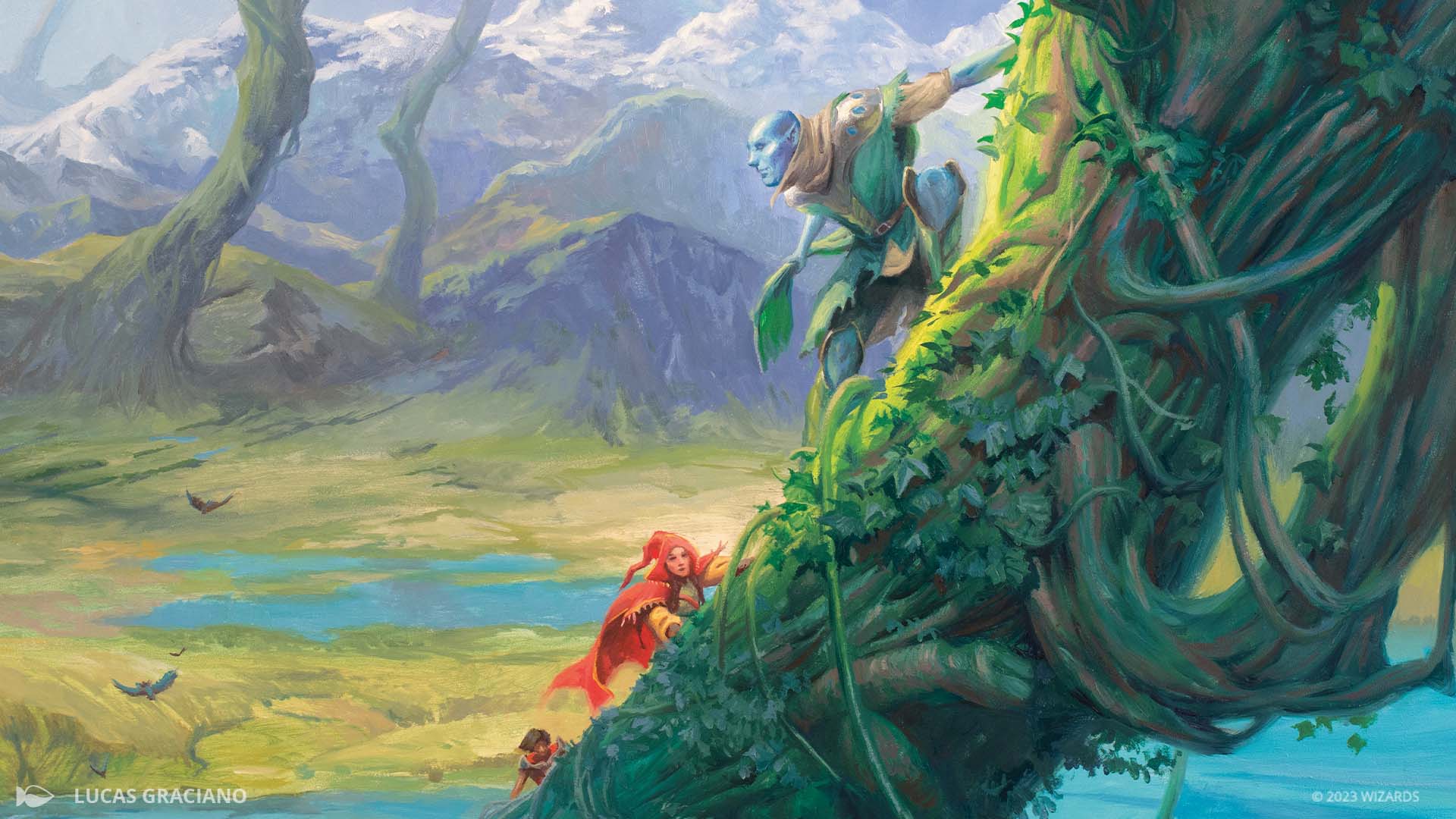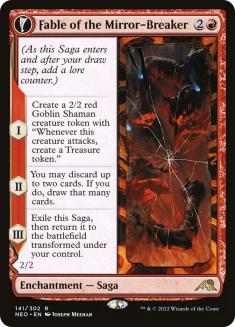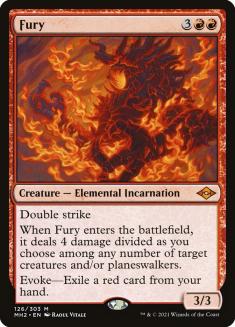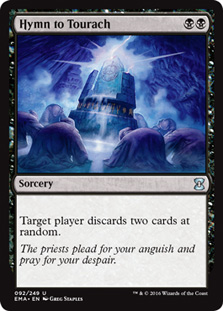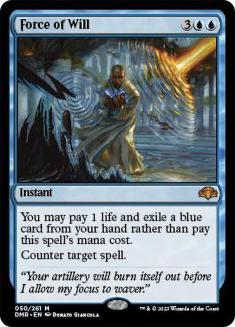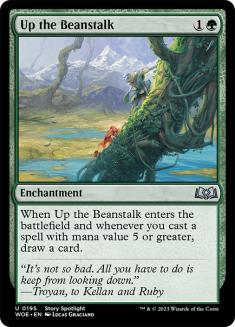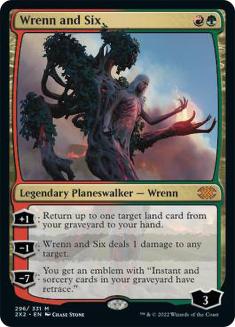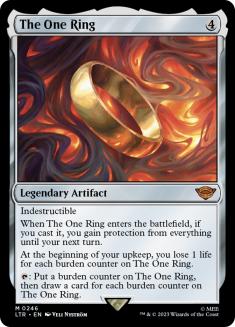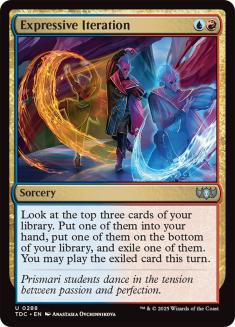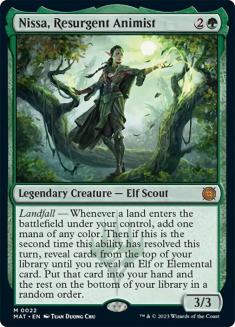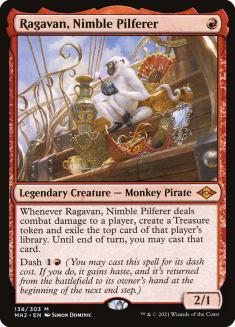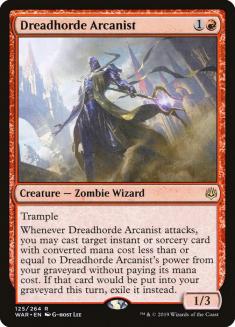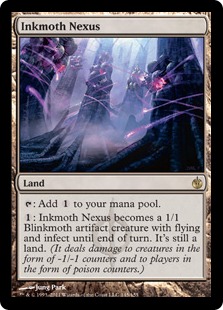Everything and nothing changed this week.
The announcement that Magic Draft Boosters and Set Boosters are being combined into Play Boosters was sure to spark discussion (to put it gently), but it caused a frenzy among Limited enthusiasts, as the design and experience of a Draft format was about to change forever. Head Designer Mark Rosewater’s claim – delivered in an offhand X/ Twitter reply – that Draft as we know it was unsustainable without this change caused a firestorm that’s still raging on every platform. The feral crowds interpreting a careless comment as cynically as possible is nothing new – being the public face of Magic must be as hard as designing it sometimes – but I can hardly insist that they give Wizards of the Coast (WotC) the benefit of the doubt after repeated gaffes.
Perhaps it’s safer to say nothing. That’s certainly the approach of the Constructed Banned and Restricted announcement that saw no changes to any format. Columns like this are part of the problem – if you know critics will pick apart your stated reasoning, why bother? – but that’s why you’re here!
Pioneer
The complaints about Pioneer aren’t new, but there’s no new evidence to support them, either. Mono-Green Devotion continued its trend of underperforming at high-level Pioneer tournaments, from Pro Tour Phyrexia through the Pioneer Showcases on Magic Online (MTGO) and several cycles of Regional Championships. Fable of the Mirror-Breaker is still the same story, but its main publishers in Rakdos Midrange and Rakdos Sacrifice have not excelled despite Fable’s best efforts.
In a bizarre statistical anomaly, none of the six most popular decks at LEC Lille had a positive win rate. You can tweak those data to correct for various factors, but the takeaway is the same – none of the usual suspects are stealing the show. Inverter of Truth and Aetherworks Marvel can testify that those statistics won’t save you if your play patterns are unpopular, but neither Mono-Green nor anything else is throttling the format as those cards did in theirs.
I have some time for structural complaints about Pioneer (such as the lack of strong, flexible answers that let you break serve on the draw), but salvation there will come from preview season rather than these announcements. I suspect many of the loudest voices demanding the end of Mono-Green would find a new target for their ire quickly once they got their way. These numbers offer a simple suggestion: win more, and you probably won’t have to worry about it!
Modern
This inaction wasn’t hard to see coming. They believe that banning nothing was the best course last time – letting Preordain back into the format instead – and that the format hasn’t changed much since then. I examined the first part after the last non-announcement, but it’s worth asking why the complaints have become so loud.
Rakdos Evoke has remained on its throne since the Pro Tour, putting up results that match its metagame share. I’ve watched many players with a strong preference for a certain deck or play style lose to Rakdos Evoke over and over again, decide that it’s better to join them if you can’t beat them, and wonder why they didn’t do that sooner.
For players coming back to Modern or exploring it for the first time for this RCQ season, it’s easy to want to leave for good after demoralizing losses to Rakdos. Rakdos Evoke is great at making the game about a specific hate card. It’s easy to accept that your big mana deck will lose to Blood Moon or that Dauthi Voidwalker will ruin your graveyard deck. You signed up for that experience. The Grief double-up, on the other hand, creates a unique sense of helplessness where it feels like your hand or plan for the matchup don’t matter, as those cards can disappear in a blink of an eye. You can preempt that with Leyline of Sanctity or Leyline of the Void, but those have the feast-or-famine play patterns that Leylines are famous for – you’ll feel even worse post-Grief when you draw a Leyline for your turn!
The Fury experience is more varied but just as frustrating. When Feign Death lets Fury impersonate Hogaak, Arisen Necropolis and threaten a Turn 3 kill or a delayed Fury torches your whole battlefield on top of that, it’s hard to see how this could lead to a satisfying game even if a timely removal spell does arrive. Compressing and constricting the game like this means that escaping from that bind will feel like you are overtly at the mercy of chance even if your odds there are good.
Everything Old Is New Again
Perhaps this feels worse because it isn’t supposed to happen anymore. Magic ‘as Richard Garfield intended’ is full of cards that are miserable for specific strategies – Karma, Gloom, and every Circle of Protection in between – or just for anyone participating in the game. If you stuck around after Hymn to Tourach and Mind Twist, you can scoff at these newer, softer generations whining about ‘only’ losing two cards at once. Let’s hope they never have to face a Stasis or Nether Void!
Modern design philosophy – meaning both ‘recent’ and through the entire span of Modern – is allergic to that kind of gameplay. Rise // Fall is the closest you can get to Hymn to Tourach, and even that would be hard to fathom in a current set. The Grief dance feels weirdly old-fashioned. It is now seeing success in Legacy too, but without the same complaints, because there’s an understanding that different formats play by different rules. The lack of free interaction like Force of Will used to be a defining feature of Modern – Grief and Fury are part of the Modern Horizons editions breaking that barrier.
More broadly, Rakdos Evoke is the only contender remaining in Modern that explicitly tries to play a ‘small’ game by trading off resources and winning quickly before the opponent can rebuild. The black midrange decks in Pioneer or the throwback Jund Midrange decks in Modern can throw odd jabs with Thoughtseize and Fatal Push, but it takes extreme measures to compete with the overwhelming push for big, high-resource games. Equal exchanges are a flawed concept in a world of The One Ring, Urza’s Saga, Omnath, Wrenn and Six, Up the Beanstalk… if you want to play fair Magic, you can’t play fair.
I won’t try to argue that Rakdos Evoke is the underdog or the hero here. That being said, the other extreme has pushed out the more normalized versions of this strategy. What’s going on there?
Climbing the Beanstalk
After all the hysteria around The One Ring, it’s impressive that Up the Beanstalk may be the tipping point that finally forces some action there – but that’s Eldraine for you!
Four-Color Control players immediately identified this card as a promising draw engine in a format where the ‘five-drops’ cost at most one mana. How much can you lean on this card when all-time greats like Wrenn and Six and The One Ring exist, and there are diminishing returns on cards that just draw more cards?
Just a few weeks in, Up the Beanstalk may already be the best in that heavyweight class. Wrenn and Six – once the main object of ban debate before Yorion, Sky Nomad took the fall instead – has been sidelined or abandoned altogether. The One Ring has lost its shine, looking rusty and clunky compared to the sleek efficiency of Up the Beanstalk. A 70-card Cascade deck with Up the Beanstalk as its guaranteed hit made the Top 8 of last week’s Modern Showcase, and that’s just the beginning. Not only are we thinking about those beans, we’re thinking of little else.
Creatures (15)
Planeswalkers (2)
Lands (25)
Spells (28)
- 3 Time Warp
- 2 Commandeer
- 4 Ardent Plea
- 1 Dismember
- 3 Murderous Cut
- 2 Bring to Light
- 3 Force of Negation
- 4 Leyline Binding
- 2 Lorien Revealed
- 4 Up the Beanstalk
Sideboard

It’s worth reserving judgment for now, after we went through the same hype cycle for the same deck with The One Ring. The format is already aiming its guns at this new menace – ramp finishers from Primeval Titan to Sundering Titan are licking their chops, while pure combo and pure control can prey on a deck that’s so dense with removal. This new iteration of Four-Color Control has the same victims as always – anyone trying to build synergy on the battlefield and the same fair decks squeezed out by Rakdos Evoke.
The calls to ban Up the Beanstalk this soon look alarmist – this would be the first true ban since
the release of Modern Horizons 2, but with a speed that matches the rapid response to the Hogaak
debacle. If they do chop that beanstalk down, we’re back at Pro Tour The Lord of the Rings where Four-Color Control looked poised to dominate and flopped hard instead. That version of the deck looked surprisingly harmless in the end – and, if The One Ring does end up in the proverbial volcano, some other deck will be responsible.
There’s a deeper problem, though. Four-Color Control (Yorion) put up excellent results for its devotees, but was held back by its steep cost and the logistical barriers to playing it in paper. Yorion, Sky Nomad had its wings clipped by the companion nerf, yet still allowed a strategy that wants to play big games to guarantee that before the game had even begun. For some, Wrenn and Six was the culprit all along, and it would still be the cornerstone of any post-Beanstalk list. Both Wrenn and Ring limit what cards and decks are playable in a way Beanstalk doesn’t.
There’s also no shortage of card advantage engines waiting for their turn in the spotlight. Expressive Iteration and Fable of the Mirror-Breaker are multi-format all-stars that are all over Modern, but they fit neatly into Four-Color Control too. It’s easy to forget that Nissa, Resurgent Animist sparked a Four-Color revival upon its release – before The Lord of the Rings: Tales of Middle-earth upended everything just a month later.
In an era of design where so many of the best cards draw more cards and/or generate more material, there will always be more replacements to fill that role. Four-Color’s flexible manabase and abundance of cheap interaction make it the most likely home for those tools unless they are explicitly narrow. Beanstalk and friends make a big impression, but even when you are building the whole deck around cascading into more Beanstalks, that remains the most replaceable part of this recipe.
Legacy players will recognize this pattern from the Delver decks there. The core of the tempo decks – all the usual blue interaction and filtering, backed up by Daze and Wasteland – has been the best thing to do in Legacy at most points for over a decade. When War of the Spark kicked off a stretch of clear power creep, the best new threats slotted seamlessly into some Delver deck and made it oppressive once more. Bannings took out those threats, but there were always more ready to step up. It took a different approach, with the Expressive Iteration ban removing Delver’s easy access to card advantage, to inflict a permanent blow.
Even now, the tempo decks are back in force. Orcish Bowmasters is one of the best anti-Delver cards in years, but Grixis Delver and Dimir Shadow are its most natural homes!
Omnath, Locus of Creation bears some of the blame for laughing at any idea of limiting resources. An uncontested Omnath makes contesting life total, mana production, or card count impossible, and drawing a card on entry means you can only trade cleanly with it on the stack. It’s the perfect partner in crime for Fury and Solitude, pitching to them (or Subtlety and Endurance, or Force of Negation and Force of Vigor…) and casting them while effectively paying for itself.
Nothing does quite what Omnath does – it would be hard to do that much! – but even this is less necessary now. Some of these Cascade decks shave copies to fit Bloodbraid Elf as another link in that chain; lists that emphasize the control in Four-Color Control can’t fit too many sorcery-speed four-drops.
All this works because of the Evoke Elementals letting you take these turns off playing card advantage engines, knowing you can interact on demand if necessary and convert additional cards into an immediate impact on the game. Up the Beanstalk lets an evoked Solitude break even on cards, and the second copy almost turns the Elementals into combo cards that chain together while devastating the opponent’s position.
This setup in turn makes it easier to reach the mid-game, where hard-casting Solitude and especially Fury is in range, plus you unlock the perfectly scripted sequence of a ‘free’ Omnath into an Elemental. The usual risk of drawing too much dead spot removal disappears when you can turn those into respectable finishers.
My Vote
I think ‘no changes’ is a fine outcome for now, but if I had to address the most obnoxious extremes of the format, I’d hit the space where they meet in the middle. Hitting both Fury and Solitude makes you work harder to climb Up the Beanstalk and takes away the structural support from that whole style of engine – including the ones we haven’t seen printed yet.
Having the threat of free interaction looming over the game at all times changes the tone of the format in a way that many find alienating. That genie won’t go back in the bottle – nobody is out here demanding the banning of Force of Negation and Force of Vigor, whatever our reactions to them at the time – and these cards act as a safety valve against the pushed threats in these sets. If a format without Solitude results in Inkmoth Nexus and Primeval Titan going berserk, we may have to be careful what we wish for.
Nevertheless, I’m excited to see what would emerge in a format where ‘normal’ creatures don’t fail this impossible test from the beginning. Unbanning proposals may spice up the format without the burden of proof that comes with a ban, but expelling Fury and Solitude effectively unbans a vast swathe of creatures squeezed out by one or both of them. These are by no means the only oppressive constraints on creatures in Modern – Noble Hierarch and Champion of the Parish will still struggle in a world of Wrenn and Six or Orcish Bowmasters (with old nightmares like Lava Dart and Plague Engineer ready to tag in at any time) – and we must be honest about which cards Fury artificially forced out and which simply haven’t aged well.
I want to see that debate played out in stores and in tournaments, rather than in some nostalgia trip. After the mixed record of the first Modern Horizons, it’s impressive that we have lasted this long since Modern Horizons 2 with no cards from that set meeting the axe – but I believe you can make the case for changing that now (or in a month when a whole new set comes out, I suppose…).

